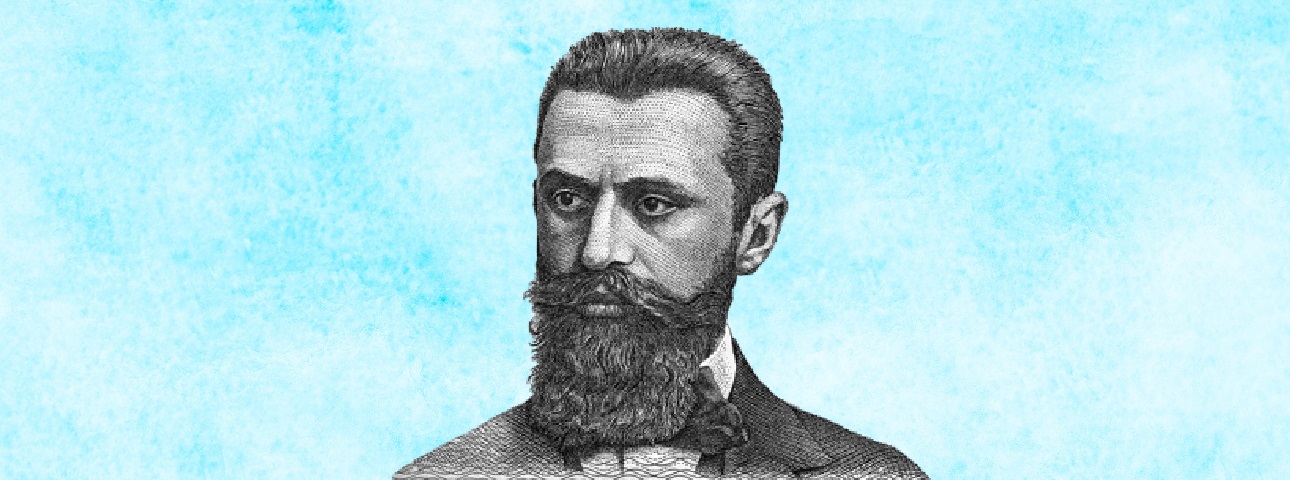Reimagining Zionism for the 21st Century
Based on her address to a special event in Basel, Switzerland, marking the 125th anniversary of the first Zionist Congress, Shlomit Ravitsky Tur-Paz, calls for today’s generation to view Zionism not only as a vehicle for building a state, but also for enhancing and enriching Israeli society.

The house I grew up in, in Jerusalem, was situated at the junction of three neighborhoods. These three neighborhoods represented what can be thought of as the Zionist triangle that inspired modern-day Israel. The biblical patriarchs and matriarchs who birthed our nation, the warriors who defended its physical wellbeing, and the spiritual and intellectual leaders who have provided us with meaning. In other words – family, security, and tradition.
The streets of the first neighborhood adjacent to my childhood home were named for the sons of the biblical patriarch Jacob, the founders of the tribes of Israel. The second neighborhood’s streets held the names of the Israeli military units, military operations and the pre-state resistance movements such as the Irgun and Palmach. And, while walking the streets of the 3rd neighborhood, one could encounter the sages of the Mishna and the Talmud.
For me this is the face of Zionism: three different groups of Jewish pioneers, over the length of almost 40 centuries, all interested in building cultural and national life in the promised land for the sons and daughters of Israel. All obligate themselves to act upon their dreams, and all holding the faith that they can make a change in the life of their generation and generations to come, that their utopian hope can be a reality, that there can be no despair and no giving up. In the words of David Ben Gurion: “In the Land of Israel, anyone who doesn’t believe in miracles is not a realist.”
The Zionist challenge today isn’t limited to the question of the numbers of Jews coming to Israel, making Aliya, or providing support to the Jewish state by fostering a connection with communities abroad. Our challenge is also to bridge the gaps between the different tribes living in Israel. The pioneers who founded the state provided us with a land, an independent country, a cultural heritage and a dream, but it is up to us to be able to execute and implement this legacy. It’s up to us to build a Jewish and democratic society, to find compromises that respect diversity and different identities and narratives - including both Jewish identities in Israel and in the Diaspora, as well as identities of the Arab minority who are citizens of Israel.
The formative image of the first decades of the Zionism was the melting pot. Erasing particular narratives, languages and traditions - in spite the anguish and the price paid - for the greater good of building a new state. Even if there were justifications for this approach at that particular moment in time, it is clear that our mission today is the opposite. 21st century Zionism is to ensure that we forge a common narrative that binds us together, without giving up on our diverse backgrounds and ideological ancestors. In the words of Binyamin Zeev Herzl in the 1st Zionist Congress 125 years ago: “The Zionist movement already succeeded in doing an exceptional thing that was considered impossible: tying a tight bond between the most modern and the most conservative elements of Judaism.” May this ability to bring together the modern and the conservative ideas and people be our success today as well.
So, how can we connect young Jews to Israel? A few years back I took part in a meeting between Lay leaders of New York Jewish Federation and leaders from Israel. As a part of an interesting exercise, a triangle was drawn on the floor, it’s three points holding different definitions for Jewish identity and belonging: the 1st point proclaimed the State of Israel as the strongest element of the Jewish Identity, the 2nd held Jewish traditions and lifecycle events and the 3rd noted: Tikun Olam. We were first asked to place ourselves on the triangle according to our identities. The results of which were not so different among the Israelis and the Americans, with most of the attendees placing themselves in mostly centrist positions in between the three points. Then, we were asked to stand were we thought our children would have stood had they been there with us. At this point, the differences became very clear. While the Israelis thought their children would make the same decisions that they had, almost all the American Jews stood in the Tikun Olam corner, and only a few that their children would consider the State of Israel and Jewish lifecycle events or traditions as a dominant part of their Jewish identity.
This is our challenge. Instead of regretting or criticizing this situation we should learn it and take advantage of it. We should invite young Jews and millennials to center their passion for Tikun Olam in Israel, in whatever field that holds their interest – climate, equality, poverty, welfare, education. We should help them integrate their vision of Tikun Olam into their homeland. The motivation would be to create a connection between their passion for activism to their Jewish heritage. To act not only as universalists, but simultaneously as Jewish activists ones, and rediscover Israel’s story as a the hopes of dreamers, activists, reformers seeking a better word – Tikun Olam. When the creation of the world was completed, God demanded of Adam and Eve, according to the Midrash, to be aware not to destroy the beautiful world given to them, because there is no one to correct their wrongs and pick up after them. Maybe the young Jews of the world can make these repairs and partake in God’s work – making the world a better place as the Jewish mission of the 21st century.
The article was published in the Times of Israel.
